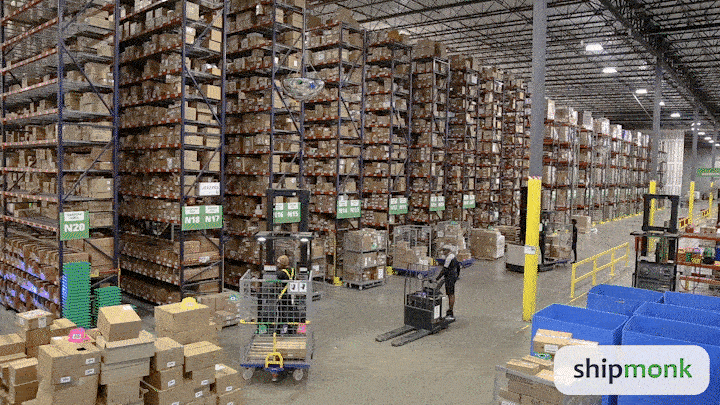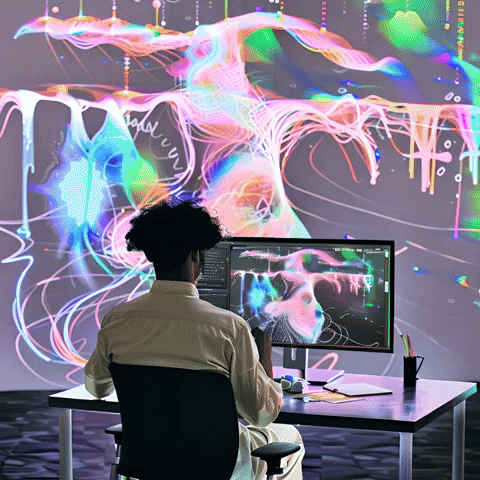To establish the difference between a chatbot and a virtual assistant, it is necessary to highlight that both represent innovative virtual tools. These have been transforming the way companies interact with their customers. However, beyond their technological advantages, many of them have been expressing their frustration with traditional chatbots..
This reality at some point led to reconsidering employing people for customer service, until virtual assistants with AI emerged. These promise to correct such a situation. Next, we will discuss why companies are opting for solutions based on artificial intelligence. So join us and learn how to choose between a chatbot and a virtual assistant.
Concepts and differences between chatbot and virtual assistant
When trying to establish the difference between a chatbot and a virtual assistant, it is important to consider the concepts of each of these terms. Therefore, as a starting point for this comparison, we will proceed to address each one separately. This is before evaluating their specific characteristics..
What is a virtual assistant?
AI and its service model can be defined as a type of program. We are talking about software based on technologies such as those related to natural language (NLP). They are designed to follow both voice and text commands and can perform many tasks typical of humans, such as:
- Reading texts.
- Taking all kinds of dictations.
- Making calls.
- Taking suggestions to users regarding the sale of goods and services.
- Answering questions.
- Scheduling meetings.
- Booking trips.
AI assistants are usually cloud-based, allowing access from anywhere with an internet connection. The best assistants of this type are supported by self-learning algorithms to become highly personalized.
What is a Chatbot?
When establishing the difference between a chatbot and a virtual assistant, consider that the former are more mechanized software tools. They are designed to manage, attend, and assist people. Such programs can be implemented on:
- Social networks.
- Web pages.
- Other digital tools to answer chats, automated emails, and more.
These facilitate the work of people by responding automatically and quickly through the recognition of keywords. For example, if you want details about the sale of a specific product, you can send a direct message and receive an immediate response.
Consider that if a mysterious and strange voice helps you find your favorite answer on the internet, it is probably a chatbot. There are really many types of these, and they are closer than you think, everywhere!
Advantages and disadvantages of chatbots and virtual assistants
Within the realm of user support and virtual assistance, these figures have gained popularity, both presenting their respective advantages and disadvantages. In this sense, apart from the differences between chatbots and virtual assistants, each can be the most suitable.
It all depends on the circumstances and the specific requirements of the centers where they will be implemented..
Chatbots: Advantages and disadvantages
When seeking to establish the difference between a chatbot and a virtual assistant, the former have few advantages. Among these, we will address some immediately.
Advantages
Among their advantages are the following:
- 24/7 availability. Chatbots are always available to serve customers at any time of the day, without needing rest.
- Cost efficiency. After developing and implementing them, they can handle numerous queries simultaneously, without significant additional costs.
- Speed and consistency. They can provide instant responses to common questions and perform repetitive actions.
Disadvantages
Regarding their disadvantages, they have:
- Frustrating user experience. When chatbots fail in their attempt to resolve situations, they could cause a negative and frustrating experience for the customer. They might feel they are receiving inadequate attention.
- Inability to understand contextually. Many chatbots are unable to understand complex contexts or ambiguous queries. This can lead to inappropriate responses.
- Limitations in recognizing typos. Usually, these assistance tools do not identify typos or variations in phrasing. This can cause frustration for users.
Virtual assistants: Advantages and disadvantages
The limitations of traditional chatbots have led many production centers to reevaluate their convenience of use. They have even reconsidered returning to human assistants to ensure a better customer experience. But technological evolution has developed a hybrid solution through AI, combining the advantages of both worlds.
As in the previous case, when seeking to determine the difference between a chatbot and a virtual assistant, you should consider that the latter presents unique particularities. Some of its positive and negative peculiarities are what we will address next.
Advantages
Among its advantages are the following:
- Better contextual understanding (24/7). AI virtual assistants can understand the context of queries more accurately, through a more natural and advanced expressive medium.
- Error correction and continuous learning. Unlike simple chatbots, AI systems can learn from past interactions to continuously improve their ability to handle typos and varied queries.
- Availability and empathy. Although they are automated systems, such elements can be programmed to provide empathetic responses. They are customizable to come closer to human interaction.
Darwin: The promise of AI for virtual assistance
A notable example to highlight the difference between a chatbot and a virtual assistant is the AI assistant called Darwin. We are talking about a virtual assistant capable of combining the benefits derived from technology (AI) with a friendly interface and advanced capabilities. All to process natural language, through:
- Typo recognition. Darwin can identify and automatically correct typos, improving response accuracy.
- Context and personalization. It uses contextual user data to provide more accurate and personalized responses.
- Multichannel integration. It can integrate with various communication platforms, allowing for unique and consistent customer service.
- Machine learning. It continuously improves from interactions, adapting to users' needs.
- Intelligent automation. It can handle repetitive tasks and common questions, freeing up time for people to focus on more complex problems.
It is undeniable that tools like Darwin are a solution. They combine the speed and availability of chatbots with the efficiency and empathy of humans, significantly improving the user experience.
Some functions of Darwin
By adopting AI, it responds like a normal person. Besides using emojis, it presents audio exchanges and contextualized responses. In short, it is increasingly less machine and more companion. It is not limited to giving pre-programmed answers but adapts and evolves when interacting, offering a natural experience.
Constantly learning
Darwin possesses intelligence and is also responsive. This virtual assistant takes exchanges with users and respectfully embraces opinions, whether constructive or critical. Additionally, it integrates establishment data to provide appropriate solutions. This changing nature allows it to constantly adapt to users' versatile needs.
Personalized for every moment
Brands have their own voices, and this virtual assistant understands this very well. If you train it, you can perform various functions under your business accent. This, regardless of being jovial, serious, or any other style you desire. In this way, it becomes a true extension of your brand.
Labor hybridization
Every small and medium-sized enterprise (SME) will be required to adapt its methods and technologies to consolidate hybrid work capabilities (AI-human). Beyond the difference between a chatbot and a virtual assistant, this mixed approach will maximize efficiency and innovation. It combines creativity and human judgment with the speed and precision of AI.
User appreciation upon entry
Pt has the ability to communicate with multiple users simultaneously, as well as group and redirect them to the appropriate team. This not only optimizes the customer service process but also ensures that each user receives relevant and even personalized assistance.
Reactivating outgoing users
Darwin initiates conversations about your specific pricing plans, among other things, with your customer base. And if the user is ready, it can be referred to the sales department. This reactivating and proactive capability helps maintain a sustained and fruitful interaction with your customers.
Pleasing users
Et understands if your products and services were useful to your users. It is capable of processing their opinions and identifying the causes of failures in the process. Such feedback is key to visualizing areas for improvement, thus ensuring user satisfaction.
Support area
Today, you could delegate simple and repetitive tasks to Darwin. And if it's something too complex to resolve, it can be redirected to a human for resolution. This efficient delegation allows your support team to focus on solving more complex issues, thereby improving the quality of service and user satisfaction.
Darwin represents an evolution in the ways production centers interact with their clientele. The process involves combining advanced technology with a touch of humanism to create exceptional and memorable experiences.
Different functionalities of chatbots and virtual assistants
The difference between a chatbot and a virtual assistant is evident, even though both were created to interact with users of businesses, companies, and others. This is precisely what we are going to do right now. We are talking about a segment of chatbot versus virtual assistant comparison so you can appreciate the scope of each one, as you will see next.
Language flow and context comprehension
The difference in this regard is as follows:
- Chatbot. It has a much more mechanical language flow, as it responds directly and immediately. In the process, it uses predetermined responses based on keywords within its programming. This limits its ability to understand the context and adapt to complex or colloquial conversations.
- Virtual assistant. It is more dynamic and closer to colloquial human language, thanks to its machine learning techniques. In fact, virtual assistants can better understand contexts and adapt to different communicative situations. This enables them to provide more complete and detailed responses to users.
Response and service capacity
Regarding the difference between a chatbot and a virtual assistant in providing responses and service, they are:
- Chatbot. It acts with great speed, using predetermined responses, and its effectiveness directly corresponds to the precision of the keywords entered by the user. This limits its ability to better handle queries not adjusted to pre-programmed scripts.
- Virtual assistant. It provides quite elaborate and detailed responses, also considering people's preferences and work demands. It could make decisions and even provide precise services, making it more suitable for solving unforeseen problems and specific doubts.
Range of possibilities
Regarding the difference between a chatbot and a virtual assistant in their respective responsibilities, we have:
- Chatbot. It performs specific tasks and has limited functionality concerning the actions it was programmed for. It cannot easily adapt to new situations or learn from previous interactions.
- Virtual assistant. It has broader capabilities and can work with greater complexity in interactions. Besides responding to unexpected scenarios, it can understand slang, evaluate sentiment, and use dialogues filled with everyday naturalness. It can also compare goods, send songs, joke, and more.
Interaction and learning
Another difference between a chatbot and a virtual assistant lies in interaction and learning. In this regard, let's see which is better, a chatbot or a virtual assistant:
- Chatbot. By relying on keywords and predefined scripts, its interaction is more rigid and limited to specific conversation patterns.
- Virtual assistant. It learns daily through machine learning, continuously improving its understanding and response capabilities.
As you can see, chatbots are useful for specific tasks and quick responses based on keywords. In contrast, virtual assistants delve deeper, offering enriched and complex services. They adapt more effectively to people's needs and provide comprehensive and humanized interactions.
Chatbot vs. Virtual assistant: Who wins the battle?
Regardless of the difference between a chatbot and a virtual assistant, virtual assistance through them is now fundamental and necessary in various fields. However, the virtual assistant stands out. It offers the availability to work 24/7, providing extraordinary efficiency and speed.
Additionally, it reduces costs by automating repetitive and insignificant tasks. Furthermore, due to its customization capabilities based on data collection, it provides a better user experience. Ultimately, these tools contribute to the modernization and competitiveness of organizations, optimizing communications and efficiency.
.png)






















